Filed to: Caturday
Huh.
Well, this is interesting. Today is the first day of March, and we're
talking about lions. Is there any truth to the folk saying that if March
comes in like a lion, it will go out like a lamb? Let's hope so, for my
frozen eastern and northern friends.
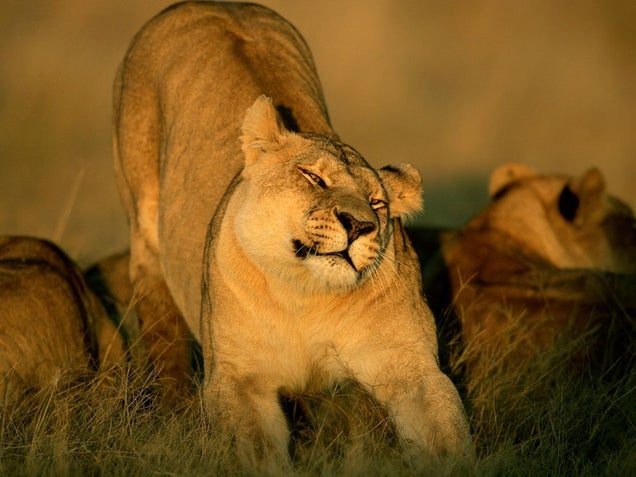 Expand
Expand
The Lion (Panthera leo)
is one of the four largest cat species in the world. It is second in
size only to the Tiger, and is unique among big cats - and cats in
general - in that it is a social cat. When people today think of Lions,
they think of Africa, but actually until the late Pleistocene era, Lions
could be found all across Eurasia and the Americas as well. Most male
Lions have a large, impressive mane around their head, face and
shoulders. Female Lions, called Lionesses, have smooth coats. This, too,
makes it unique among cats, as most species have no obvious sexual
dimorphism.
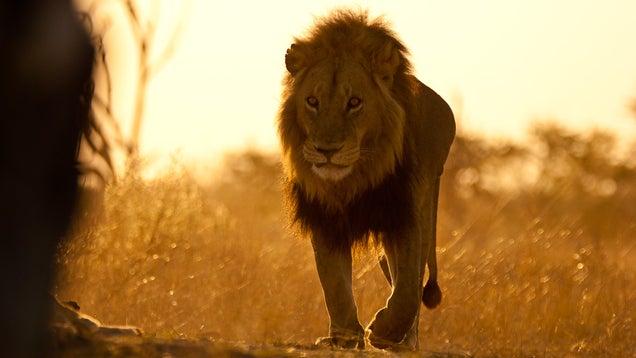 Expand
Expand
Lions today
can be found only in sub-Saharan Africa and parts of Asia. They have
disappeared from their historical ranges in Southwest Asia and Northern
Africa. A Lion's size depends upon its environment, but in general male
Lions can weigh up to 550 pounds (250 Kg) and females 401 pounds (182
Kg). Males can measure 8 feet, 2 inches in body length (2.5 m) and
females can measure 5 feet, 9 inches (1.75 m). They are, on average,
taller at the shoulder than Tigers, although Tigers outweigh them.
African Lions tend to be larger than Asian Lions. Lions have the loudest
roar of any cat.
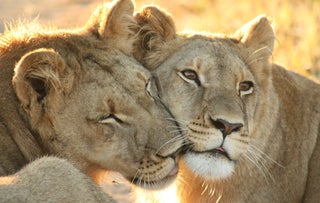 Expand
Expand
Lionesses
form the social backbone of any pride. In most cases, Lionesses in the
same pride are related to each other - sisters, mothers, daughters. They
have little tolerance for outsiders. The size of the pride changes
mostly with the births and deaths of the Lionesses, and only rarely will
a Lioness leave her pride and become a nomad. Lions who live in prides
are called residents; Lions who wander alone are called nomads. Average
prides consist of about six Lionesses and their cubs, male and female.
There is usually one male around who will mate with the Lionesses,
although sometimes there are two. Two or more male lions in a pride are
called a coalition. When male cubs reach two to three years of age,
their maternal pride begins to exclude them, forcing them to move on as
nomads. Nomads may travel and hunt together in small groups (usually two
or three), but this is not as strong a bond as exists among a pride.
Female nomads have a harder time going from nomad to resident, as
Lionesses generally do not allow non-related females to join their
pride.
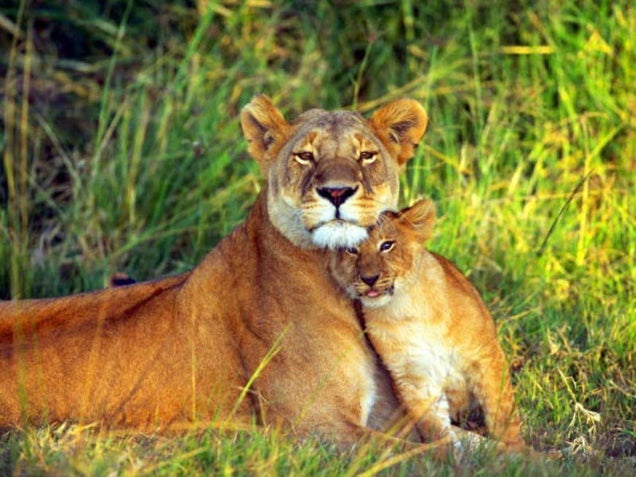 Expand
Expand
Lionesses
do the bulk of hunting for the pride. They are more effective hunters
than male Lions - they are smaller, agile, and faster than males, and
their smooth coat allows them to stalk prey more inconspicuously. Small
kills are shared at the kill spot among the hunters, while large kills
are brought back to the pride area to share. Males do not share food
they have hunted and killed themselves, and if they happen to be near
when the Lionesses make a kill, it's not uncommon for them to take
possession of the carcass and eat most of it themselves. They will share
with cubs, though.
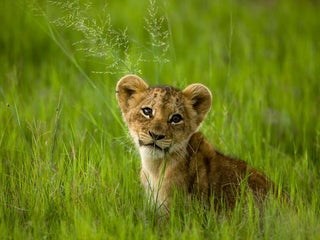 Expand
Expand
There are currently eight recognized subspecies of Lion:
- Panthera leo leo, the Barbary Lion. Originally found from Morocco to Egypt. Now extinct.
- Panthera leo persica, the Persian or Asiatic Lion. Originally found from Turkey to Pakistan, now only 400 are left in the wild, near Gir Forest in India.
- Panthera leo senegalensis, the West African Lion. Found from Senegal to the Central African Republic.
- Panthera leo azandica, the Congo Lion. Found in the northeastern parts of the Congo.
- Panthera leo nubica, the Masai or Tsavo Lion. Found from Ethiopia to Mozambique.
- Panthera leo bleyenberghi, the Katanga Lion. Found from Namibia to Zimbabwe.
- Panthera leo krugeri, the Transvaal Lion. Found in southeastern Africa.
- Panthera leo melanochaita, the Cape Lion. Found along the Cape. Now Extinct.
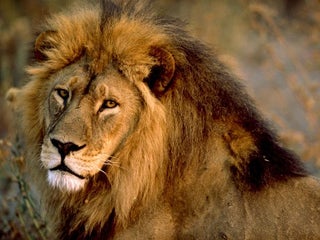 Expand
Expand
Lionesses
will give birth to a litter of one to four cubs after a 110-day
gestation period. Lionesses have their cubs away from the pride, and
will hunt for themselves while the cubs are still in their first eight
weeks of life. During that time, she will move them from den to den, in
order to avoid saturating any one spot with her and her cubs' scent.
This helps to keep other predators from discovering them. Lionesses will
generally synchronize their reproductive cycles in order to have cubs
roughly at the same time as each other, which makes all the cubs about
the same size and age, and gives all of them more of a chance at
survival. Cubs will nurse from their mother or any other nursing female
in the pride, allowing the Lionesses to share the burden of feeding the
young.
http://observationdeck.io9.com/caturday-panthera-leo-edition-1534170580
http://observationdeck.io9.com/caturday-panthera-leo-edition-1534170580
No comments:
Post a Comment